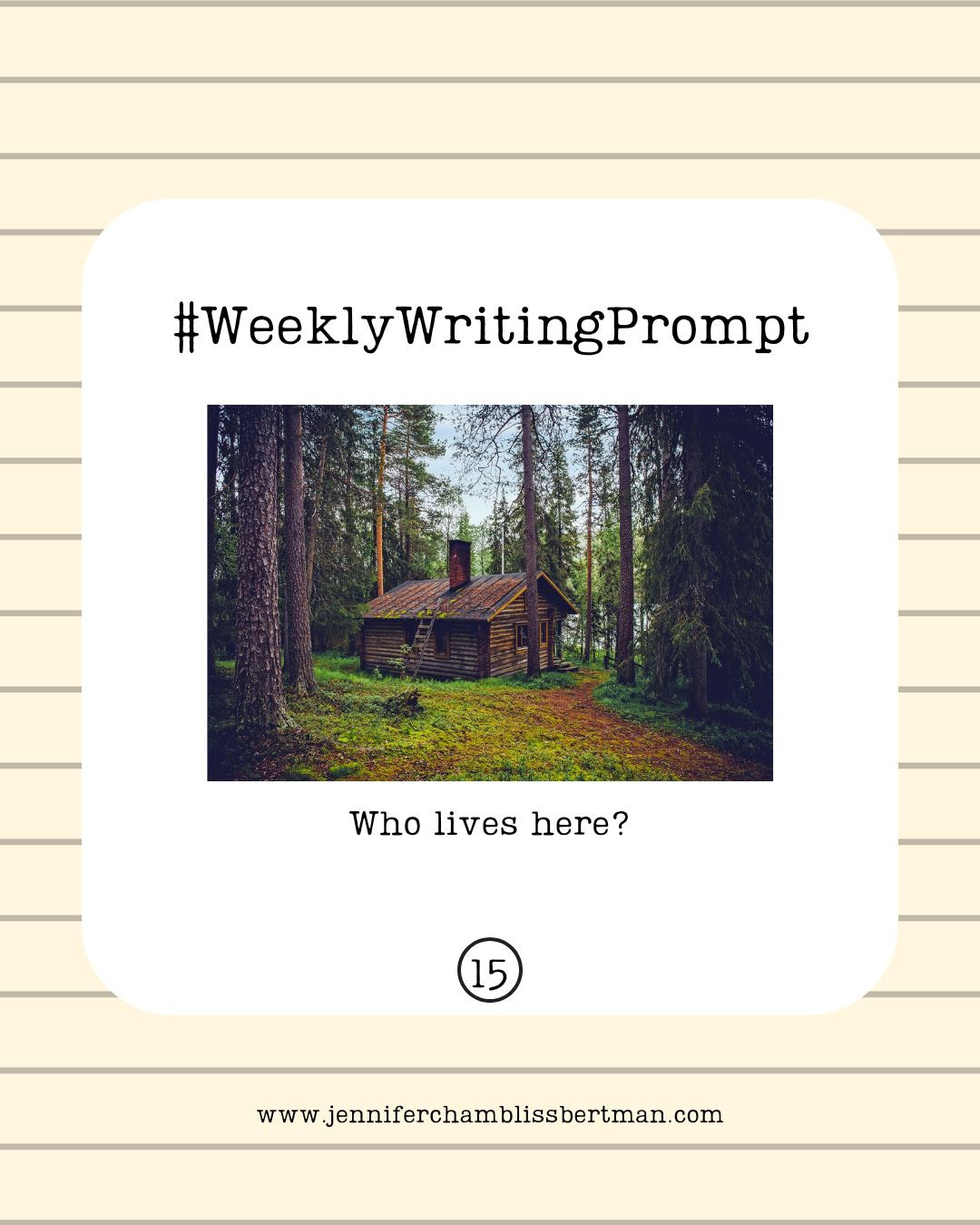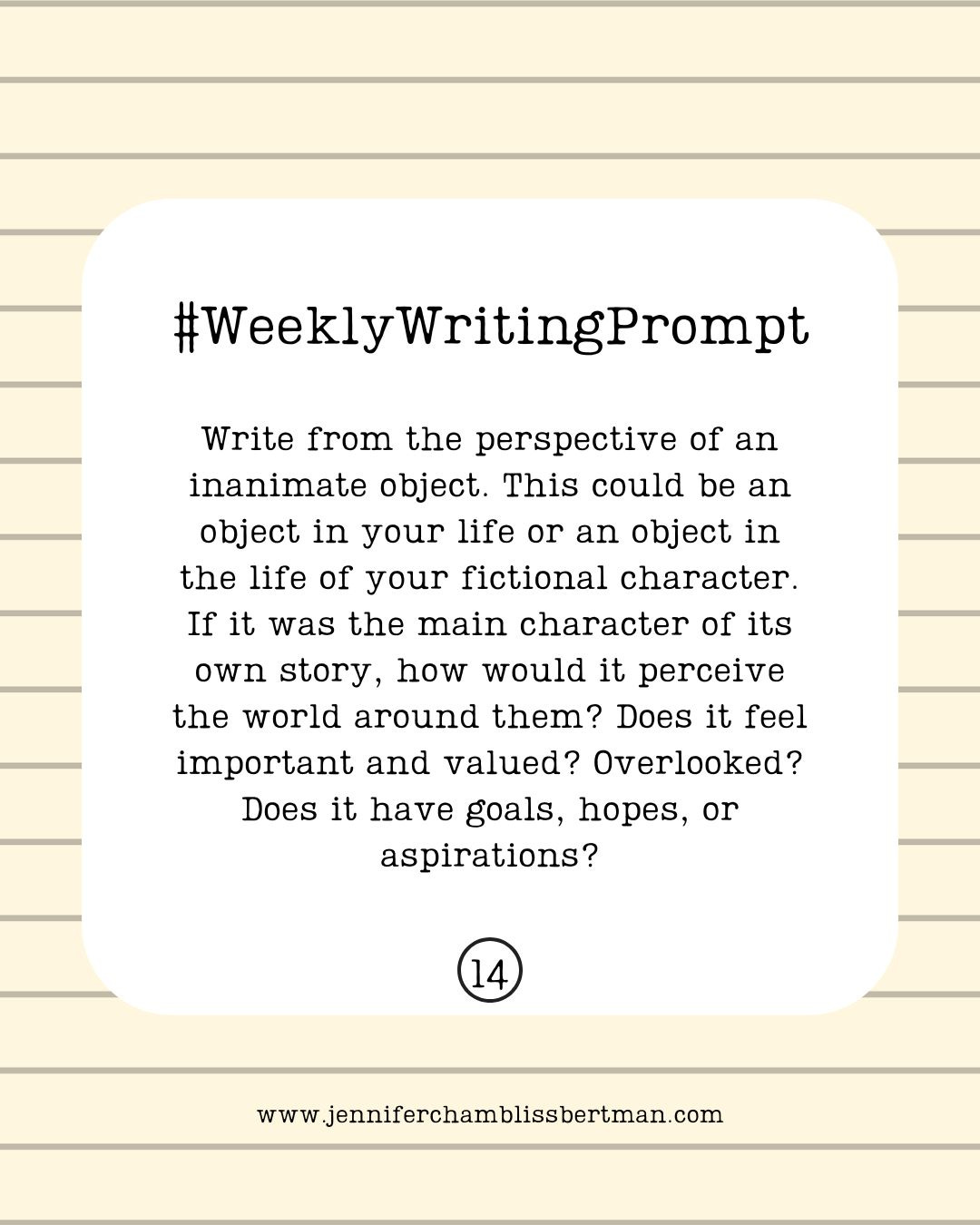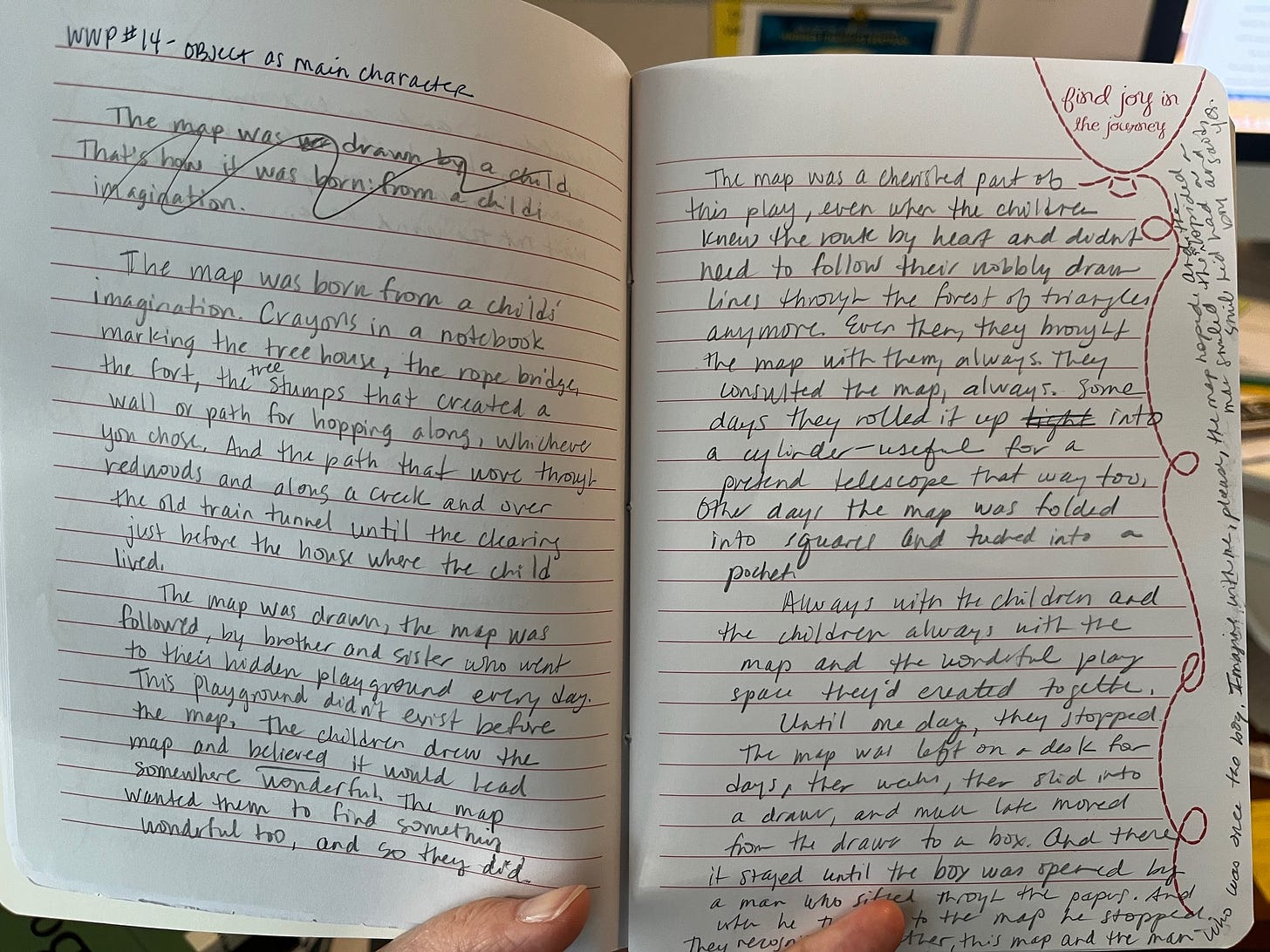This year I have a personal goal to do more writing “play,” so I’m creating weekly prompts for myself and sharing online, in case you’d like to join me too. I hope you will! Teachers, you’re welcome to use these with your students. I’ll be posting these every week on my website, Instagram, Blue Sky, and Substack.1
I love using a picture as a prompt, especially one that suggests a setting with hints of a character, but no actual character. It feels like an invitation to my imagination to fill in the blanks. Who lives in this little cabin in the woods? What are they like? Maybe the someone isn’t even human. Who might the character be then? What is something they wish for that’s difficult for them to have? Why is it difficult? If they made a plan to pursue this wish, what might that look like?
Let’s follow our imaginations and have some fun with this cabin in the woods. Join me?
My Response to Writing Prompt #14
As a reminder, here is last week’s prompt:
Sometimes when I write in my notebook, I pause between sentences or words as I think of what will come next. Other times the words flow in stream of consciousness, and I have to write quickly in order to keep up with them. I never know which it will be when I sit down to write.
This time, I thought for a bit before I wrote the first two sentences. Then I immediately realized I’d like those two sentences better if they were combined into one. I hesitated for a moment, because one of my intentions with these prompts is to curb any perfectionist thinking. I can fuss with a paragraph for a really long time, trying to get it “just right” and I don’t want to do that here. But I couldn’t resist this urge to revise, so I crossed out my sentences and wrote a new one.
And then, for some reason, it was like a faucet of words had been turned on. My imagination was dictating, and I was just the transcriber. Maybe these ideas had been gathering in the recesses of my brain, and the revised sentence was the handle I twisted to let them out.
I love when writing flows like that, but I also like writing at a slow, plodding pace too. One way doesn’t feel better or worse than the other, they’re just different. The important thing is getting the words out of your head and onto the page, whatever way works best for you.
Here is my response to the prompt:
WWP#14—object as main character
The map was born from a child’s imagination. Crayons in a notebook marking the treehouse, the rope bridge, the fort, the tree stumps that created a wall or path for hopping along, whichever you chose. And the path that wove through redwoods and along a creek and over the old train tunnel until the clearing just before the house where the child lived.
The map was drawn, the map was followed, by brother and sister who went to their hidden playground every day. This playground didn’t exist before the map. The children drew the map and believed it would lead somewhere wonderful. The map wanted them to find something wonderful too, and so they did.
The map was a cherished part of their play, even when the children knew the route by heart and didn’t need to follow their wobbly drawn lines through the forest of triangles anymore. Even then, they brought the map with them, always. They consulted the map, always. Some days they rolled it up into a cylinder—useful for a pretend telescope that way too. Other days, the map was folded into squares and tucked into a pocket.
Always with the children and the children always with the map and the wonderful space they’d created together.
Until one day, they stopped. The map was left on a desk for days, then weeks, then slid into a drawer, and much later moved from the drawer to a box. And there it stayed until the box was opened by a man who sifted through the papers. And when he turned to the map he stopped. They recognized each other, this map and the man who was once the boy. Imagine with me, please, the map hoped. And the man smiled the same lopsided smile he’d had as a boy and said, “Yes.”
You can find previous prompts and my responses here.
Related Reading
I recently finished a great middle-grade mystery that largely centers on an inanimate object. If you haven’t read Olivetti by Allie Millington, I recommend it. Olivetti is a typewriter, and the story is told from two perspectives: Olivetti’s and a boy named Ernest. Olivetti is part of Ernest’s family until Ernest’s mom sells Olivetti to a pawn shop and then disappears.
Have you read any books that feature inanimate objects recently?
Until next time,
Jenn
"You have been my friend," replied Charlotte. "That in itself is a tremendous thing."
― E.B. White, Charlotte's Web
If you want to receive all my weekly writing prompts in your email, or my less frequently sent author newsletters, subscribe to my newsletter/Substack and click on the link to manage your subscription. There you should see a Notifications section and you can turn on/off which emails you’d like to get from me. Reach out if you have questions—I’m happy to help! Your questions also help me understand what’s working/not working with Substack, as I’m still getting the hang of things here.









This was a fun one! I wrote a story... When should I post it?